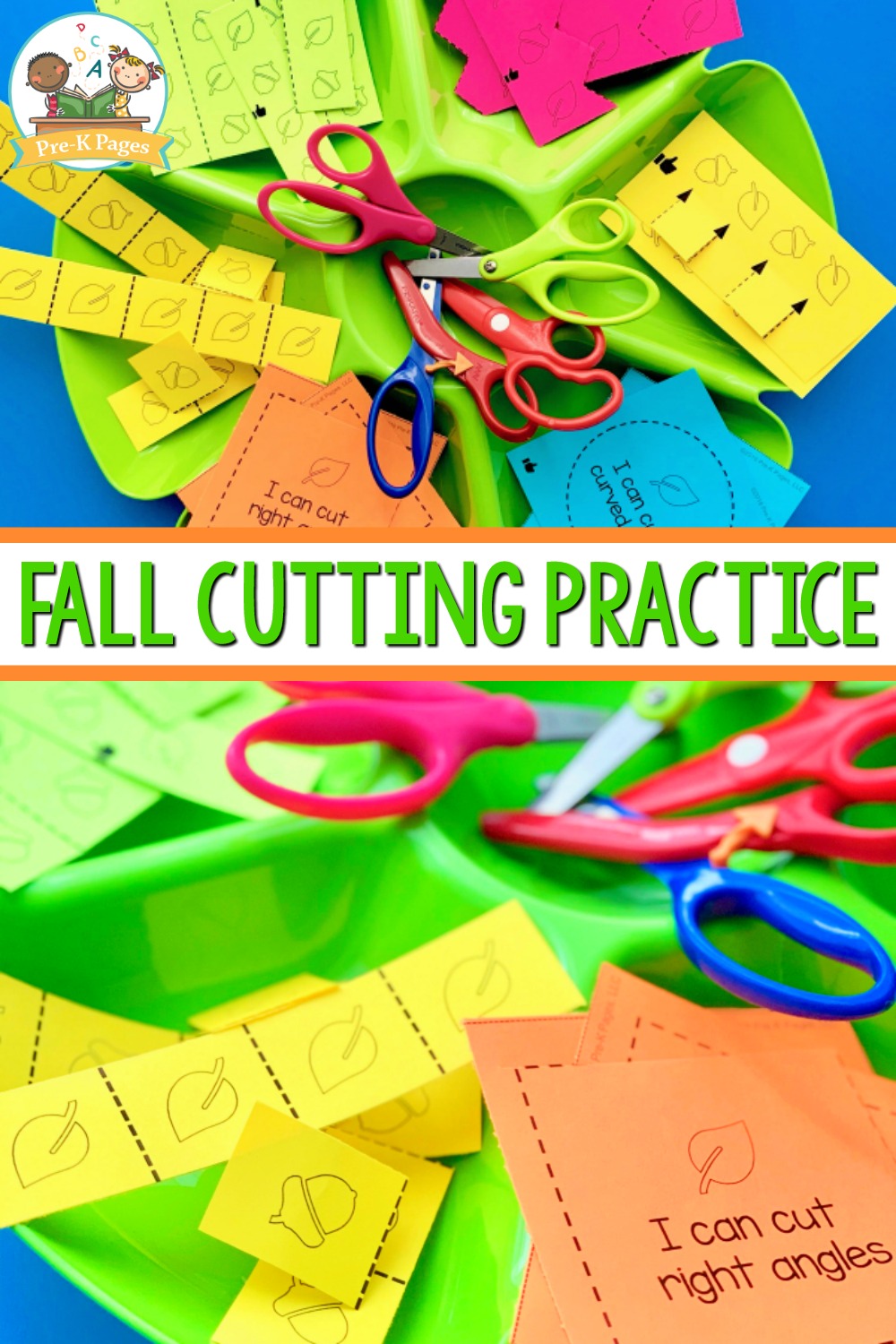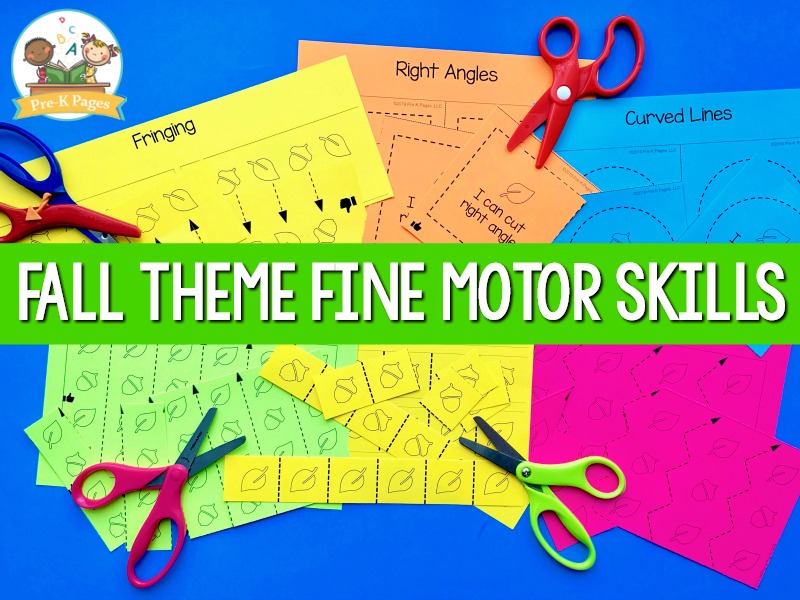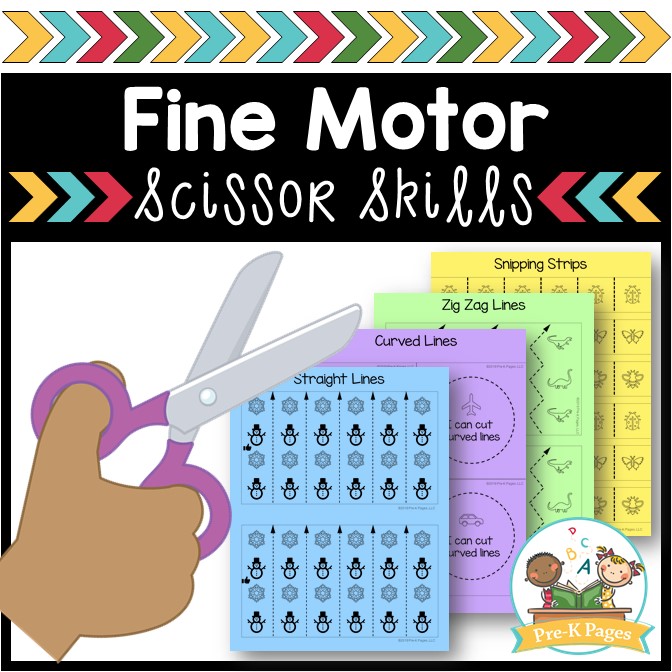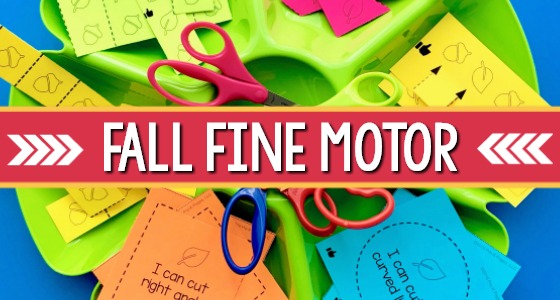Are you looking for fine motor activities for a fall theme? Teaching preschoolers to use scissors can help them develop fine motor skills and pre-writing skills. This fall-themed fine motor tray will help you easily differentiate your instruction to introduce scissors to your child in a way that’s appropriate for each stage of their development.

Fall Fine Motor Skills
If you’re afraid of teaching your preschooler to use scissors, You’ve come to the right place! Teaching young children how to use scissors is more complicated than it sounds. You can’t just give them scissors and hope for the best. If you’ve been teaching for more than a few weeks, you know that introducing scissors to preschoolers often results in cutting clothes, hair, and pretty much anything they want. shouldn’t Cutting.
But introducing scissors to preschoolers doesn’t have to be scary. Developing fine motor skills, like cutting with scissors, is a process that happens over time, it doesn’t happen overnight. If you are assessing a student’s fine motor skills firstthen meet them where they are and learning how to cut with scissors will be much easier – for you and your students.


Fall Fine Motor Scissor Exercises
Learning how to cut with scissors is one of the hardest fine motor activities for children to learn, and they can quickly become frustrated when they first start using scissors.
These fall-themed cutting practice pages are the perfect way to keep little learners from getting frustrated. They’re designed with differentiation in mind so you can meet each child’s stage of fine motor development.
Let’s face it, cutting out basic lines on white paper can get boring very quickly for little kids. By using these fall fine motor practice pages, you can quickly and easily make practicing scissor skills more engaging for your students. Adding acorns and leaves will help liven things up and increase the opportunity to practice fall vocabulary.


Fall Scissor Technique Practice
When students use scissors to cut, they are developing important pre-writing skills, such as holding a pencil and writing.
Cutting with scissors has many other educational benefits. Listed below are some of the skills students develop when using scissors:
- Practice independent movements of each finger in the hand
- Strengthens small hand muscles (necessary for gripping writing instruments and self-help techniques)
- Develop hand-eye coordination
- Improve bilateral coordination (using both sides of the body at the same time)
- Develop visual perception skills (directionality)
- Practice fine motor skills (opening and closing scissors)
- Increase concentration and attention span


Fall cutting tips
If you’ve ever had the experience of asking your child to write their name and they told you a straight “no”, Keep reading! (Hint: It’s not because they are spoiled or don’t have any respect.)
Rather than panic or punish your child for saying “no,” I challenge you to view these negative behaviors as forms of communication. What is your child trying to tell you when he says “no”?
When young children refuse to do something by saying “no,” it may mean that they may not have acquired the necessary prerequisite skills to do what you are asking them to do. The best way to handle this situation is to focus more on strengthening the student’s fine motor skills, forward Ask or ask them to write. You can achieve this by incorporating scissor skills and cutting activities into your lesson plans.


Fine motor exercises for fall
There are things you may already be doing to prepare your child to use scissors. Providing students with daily opportunities to play with play dough in the classroom is one of the easiest ways to get their little hands ready to hold a pair of scissors.
You probably also have a super fun writing center in your classroom, perfect for practicing how to use writing tools like crayons, pencils, and markers.
If you want to make learning scissor skills less stressful and more fun for your child, then you need the Fine Motor Scissor Cutting Skills Pack. This bundle includes a cutting skills development sequence, cutting skill practice pages for a variety of topics, and assessment sheets.
Now you can meet your child wherever they are in their individual learning.
Check out this research-based, fun learning unit in our course store!
Bundles with 14 of my most popular fall resources, including math and literacy group activities! Make learning fun with these hands-on resources!
Scissor skills assessment
Did you know your child needs to be able to do something forward Are they ready with scissors in hand?
First, you need to understand where your students are in the process of acquiring scissor skills. This is where the Scissor Skill Pack Assessment comes in.
After you introduce scissors to your students and They’re able to open and close the scissors on their own and you’re good to go.
First, you’ll need a copy of the Scissor Skills Checklist included in the Scissor Skills Pack. This will give you a better understanding of the different stages of development that young children go through as they learn how to use scissors.


Cut out practice pages
When teaching scissor skills, you must first assess your students and then carefully plan how to help each individual develop their cutting skills. It might be tempting to throw a bunch of paper cutting practice pages on the table for the kids to try—but there’s so It’s much more than that.
The activities in the Fine Motor Scissor Skills Pack are only for purposeful teachers, those who really want to help meet children where they are and help them get to the next level.
The Scissor Skills Pack includes black and white pages for each different cutting skill, including an autumn theme. Did you know that crumpling and tearing paper with little hands are two skills? forward Introduction to universal scissors? True story!
After cutting, scissor skills gradually increase in difficulty, from straight lines to curves to simple shapes. Each printable practice page features a thumbs-up image to indicate where children should hold the paper when cutting.
You can use AstroBrights cardstock to make this activity visually appealing to your child, but it’s not required. Different colors also help you distinguish each stage of cutting. You can use any type of paper you like or have on hand. Alternatively, you can use a permanent marker on construction paper to make your own practice pages. Get your copy of the Fine Motor Scissor Skills Pack here.
More Fall Theme Ideas




